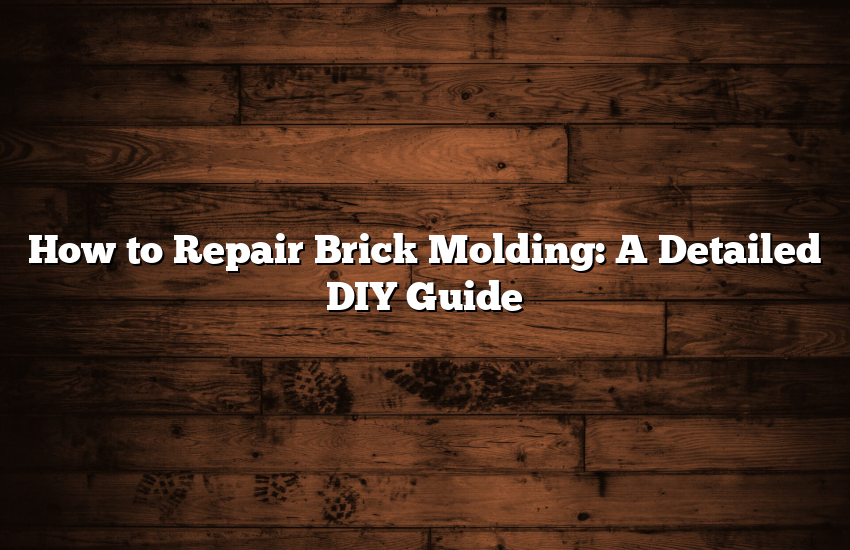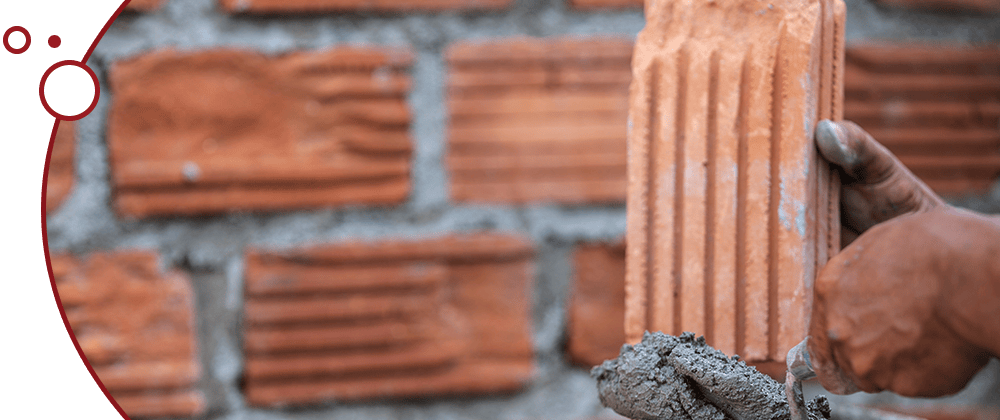
Understanding how to repair brick molding is crucial for maintaining the aesthetic appeal and structural integrity of your home. Brick molding, often found around windows and doors, is prone to damage from weather and age. This guide is dedicated to providing homeowners with comprehensive and straightforward steps to effectively repair and preserve their brick molding, ensuring a lasting and beautiful exterior.
Table of Contents
Understanding Brick Molding: What You Need to Know
Brick molding, an essential component in home construction, is primarily utilized around windows and doors. Its key functions include enhancing the exterior aesthetic of the house and sealing gaps to block water and air infiltration. Typically made of wood, though sometimes constructed from alternative materials like PVC or composite, brick molding serves as a transitional element between the brickwork or siding and the window or door frames.
Importance of Brick Molding
- Aesthetic Appeal: It adds a finished and polished look to the exterior.
- Protection: Acts as a barrier against environmental elements, preventing water and air leaks.
- Support: Provides structural support to doors and windows.
Signs Your Brick Molding Needs Repair
Recognizing the signs of damage early can save substantial time and money. Here are common indicators:
- Cracking or Splitting Wood: This is often due to weather exposure and age.
- Rot or Mold Growth: Caused by prolonged exposure to moisture.
- Peeling Paint: Indicates aging and exposure to the elements.
- Visible Gaps or Loosening: Suggests structural weakening or shifting.
Tools and Materials: Preparing for Repair
Before commencing repairs, ensure you have all the necessary tools and materials. This preparation is crucial for a smooth and efficient repair process.
- Hammer and Nails: For removing damaged sections and securing new ones.
- Wood Filler or Epoxy: To fill small cracks and holes.
- Sandpaper: For smoothing surfaces before and after applying filler.
- Primer and Paint: To protect the wood and match your home’s exterior.
- Caulk and Caulk Gun: For sealing edges and gaps.
- Replacement Wood: If large sections need replacement, choose a similar wood type for consistency.
Choosing the Right Materials for Longevity
Selecting durable materials is key to ensuring the longevity of your repairs. Consider weather-resistant woods like cedar or redwood, which offer natural rot resistance. For a more maintenance-free option, PVC or composite materials can be excellent choices, though they may differ in aesthetics.
Step-by-Step Guide to Repairing Brick Molding
1. Inspect and Remove Damaged Sections
Begin by thoroughly inspecting the molding. Look for any signs of damage as mentioned earlier. Using a pry bar or hammer, carefully remove the damaged sections. Be gentle to avoid further damage to the surrounding areas.
2. Prepare the Surface
Once the damaged sections are removed, clean the area thoroughly. Remove all loose paint, debris, and dust. Sand the surface to create a smooth base for repairs. This step is crucial for the adhesion of fillers and paints.
3. Fill in Minor Damages
For small cracks or holes, use wood filler or epoxy. Apply it evenly with a putty knife, ensuring it fills the gaps completely. Allow it to dry as per the manufacturer’s instructions. This step is vital for restoring the structural integrity of the molding.
4. Replace Severely Damaged Sections
In cases where large sections are removed, measure and cut new wood to fit. Ensure that the new piece matches the existing molding in size and shape. Secure it in place with nails, checking that it’s flush with the surrounding areas.
5. Sanding and Smoothing
After the filler or new wood is in place, sand the area thoroughly. This step ensures that the repair blends seamlessly with the existing molding and provides a smooth surface for painting.
6. Priming and Painting
Apply a quality primer to the repaired sections. Once the primer is dry, paint over it with a color that matches your home’s exterior. Ensure the paint is suitable for outdoor use and capable of withstanding weather conditions.
7. Sealing and Finishing
The final step is to apply caulk around the edges of the molding. This seals any remaining gaps and provides a watertight finish. It also helps in preventing future water and air infiltration.
Maintenance Tips: Prolonging the Life of Your Brick Molding
- Regular Inspection and Cleaning: Keep an eye on the condition of your brick molding and clean it regularly to prevent buildup of dirt and debris.
- Repaint and Reseal as Needed: This not only maintains the appearance but also adds an extra layer of protection against the elements.
- Address Minor Damages Promptly: Small issues can quickly turn into major problems if left unattended.
By following these steps and tips, you can effectively repair and maintain your brick molding, ensuring it continues to enhance the beauty and functionality of your home.
Conclusion:
In conclusion, mastering how to repair brick molding is an invaluable skill for any homeowner. By following the detailed steps outlined in this guide, you can ensure that your brick molding remains in excellent condition, enhancing the beauty and functionality of your home. Remember, regular maintenance and timely repairs are key to prolonging the life and appearance of your brick molding.
FAQs:
Q: How often should I inspect my brick molding for damage?
A: Regular inspection, ideally twice a year, helps identify issues early, ensuring timely repairs and preventing extensive damage.
Q: Can I perform brick molding repairs myself?
A: Yes, basic brick molding repairs can be a DIY project if you have the right tools and follow detailed instructions.
Q: What is the best material for replacing damaged brick molding?
A: Durable woods like cedar or redwood are ideal for replacements, offering natural resistance to rot and decay.
Q: How do I prevent rot in brick molding?
A: Preventing rot involves regular maintenance, such as painting and sealing, and ensuring proper drainage around the molding.
Q: Is it necessary to repaint the entire molding after a repair?
A: It’s not always necessary to repaint the entire molding, but doing so ensures a uniform appearance and enhanced protection.


